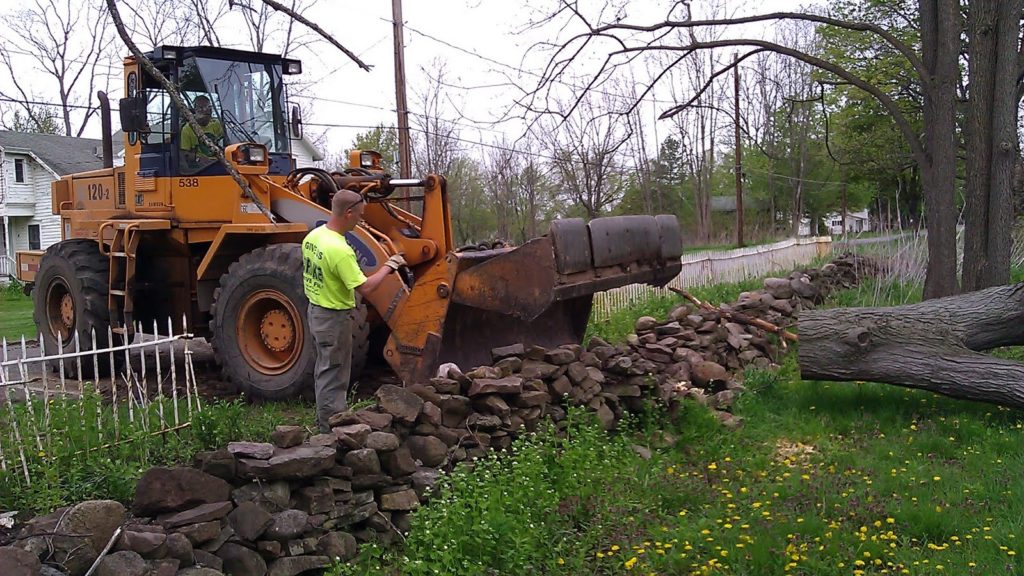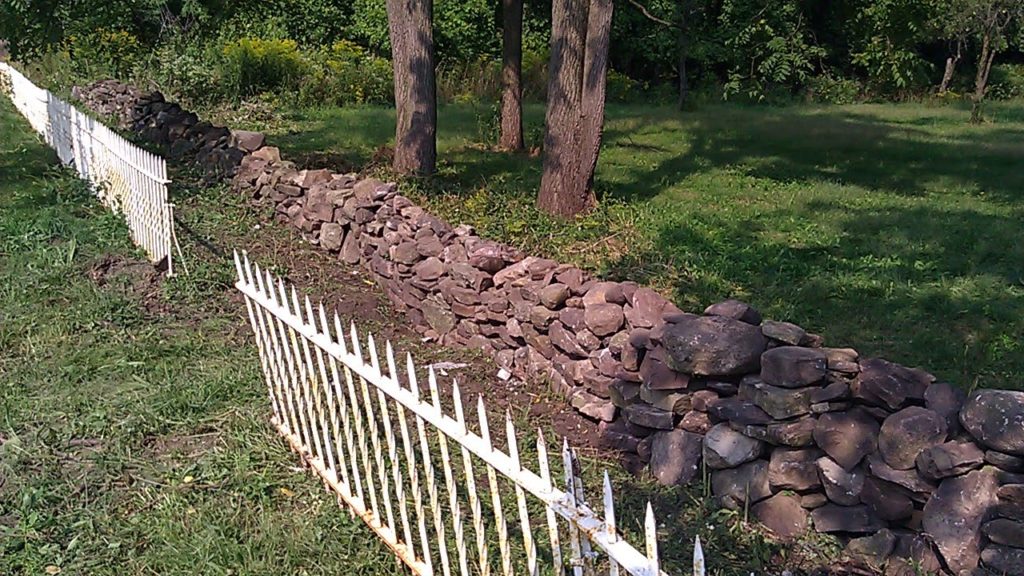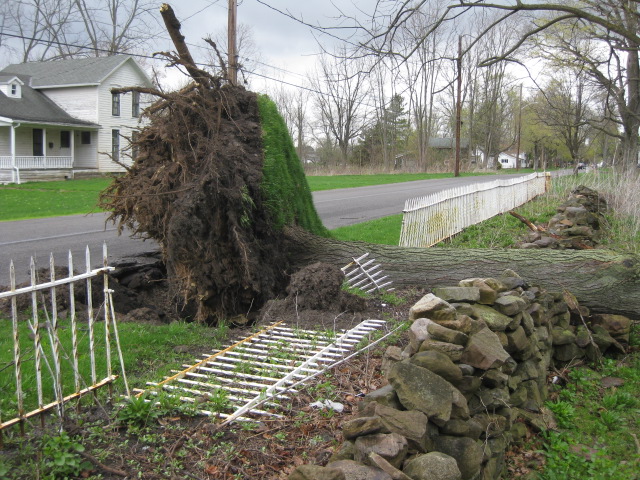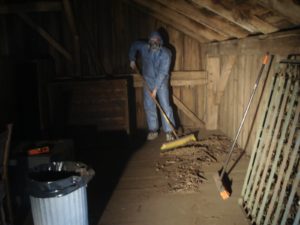Back in April we wrote about a powerful freak windstorm hit Lockport, NY with wind speeds recorded at 83 mph. Dozens of trees fell, knocking down power lines and blocking traffic. The most notable casualty was a grand century-old Locust tree that shaded our quiet neighborhood street. When it fell, it left an 8-foot deep crater in the road. It also crushed an old iron fence and a section of a historic fieldstone wall that my ancestors built back in the 1830’s.
The fallen tree lay there for a few weeks (during which neighbors and passerby stopped to take photos) until the City hauled it away. The crew had to bulldoze a wider span of the old stone wall to drag it off our property. Just what I needed: another project.

Back in the day, horse- and ox-drawn plows crisscrossed the farm, tilling the ground. Rocks that were plowed up were carted to the sides of the fields where they were used to build stone walls that marked plots and property lines. Several generations of farming had produced a sizable wall of stacked rock. It stretches through the fields, in neighbors’ yards and even pops up on the other side of the street.
Project Rebuild waited until the end of the summer, after planting and the weather cooled off and when my brother-in-law, a former Russian body-builder, happened to be visiting. The first step was actually to clear the jumble of rocks and dismantle more wall so I could see how it was originally constructed. It brought me back to my days working as an archaeologist.
It was a double-wall construction, where two lines of large flat-faced rocks were placed on either side, and small rocks were piled in the middle trough. Thin stones where then used as shims to stabilize the layers. This back-breaking process was repeated until the wall was about 4.5 feet high, then a large capstone was set on top to hold everything in place.

Putting the wall back together was like finishing a large, very heavy jigsaw puzzle. The biggest boulders weighed over 300 pounds. And we have no oxen. It took pick axes, pry bars, perseverance and a lot of brute strength. But, we repaired the wall. Then, we even moved on to rebuild some other sections that had crumbled and collapsed over the decades. When we were finally finished, we’d added 20 feet of new wall with stones that we had collected during this growing season.
Repairing that wall made me appreciate the amount of labor that went into building this farm over the generations. It’s the kind of work that has to be done by hand. Sure, a machine could move the rocks, but only a person can construct that complex wall. Rebuilding the wall was like rebuilding a connection to my ancestors who did the same project on the same spot 180 years ago.

Next time you drive through the countryside and see an old stone wall in the woods, take a second to think of the family who toiled in the fields and built that wall in their attempt to clear the land and make a life for themselves. Until the day comes when no more stones surface in the fields, the wall on our property will be, as it’s always been, a work in progress.


 The problem is that we cannot use it for farm jobs because it is filled with generations of old stuff – broken furniture, lead windows, rusted kitchen utensils, old books, photos, trunks of molded clothing. It has gathered about 80 years’ of dust and squirrel nests. We’re pretty sure it has become New York’s largest squirrel condominium. To be able to use the space, we have to clean and organize it and perhaps evict some angry squirrels.
The problem is that we cannot use it for farm jobs because it is filled with generations of old stuff – broken furniture, lead windows, rusted kitchen utensils, old books, photos, trunks of molded clothing. It has gathered about 80 years’ of dust and squirrel nests. We’re pretty sure it has become New York’s largest squirrel condominium. To be able to use the space, we have to clean and organize it and perhaps evict some angry squirrels.
